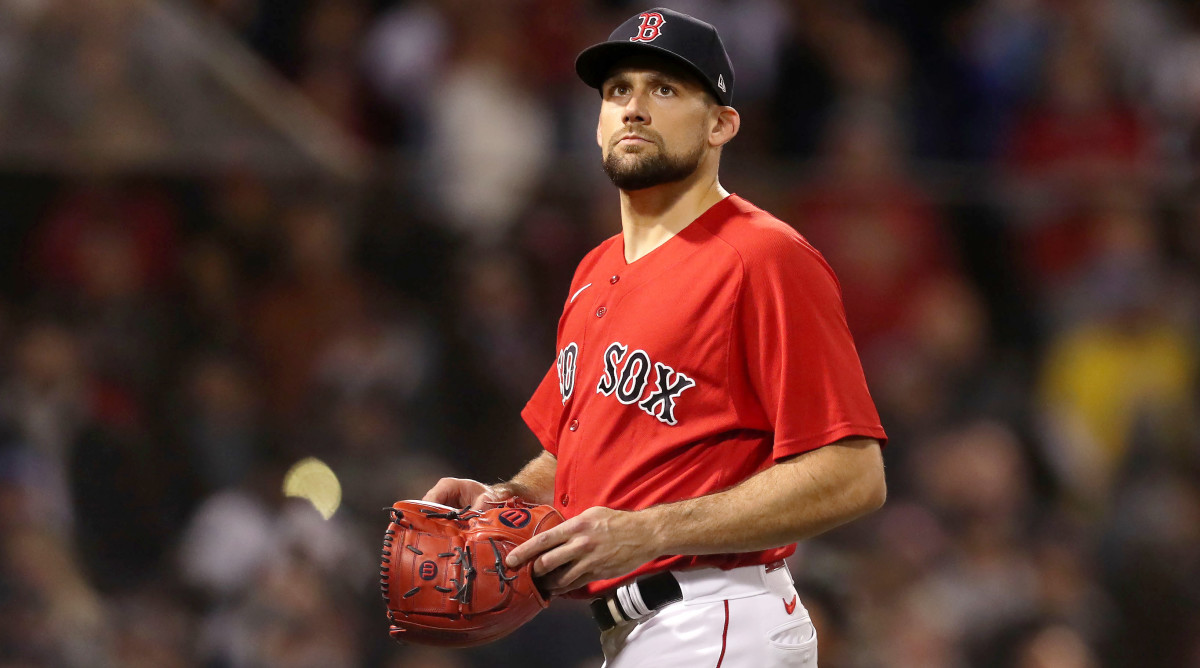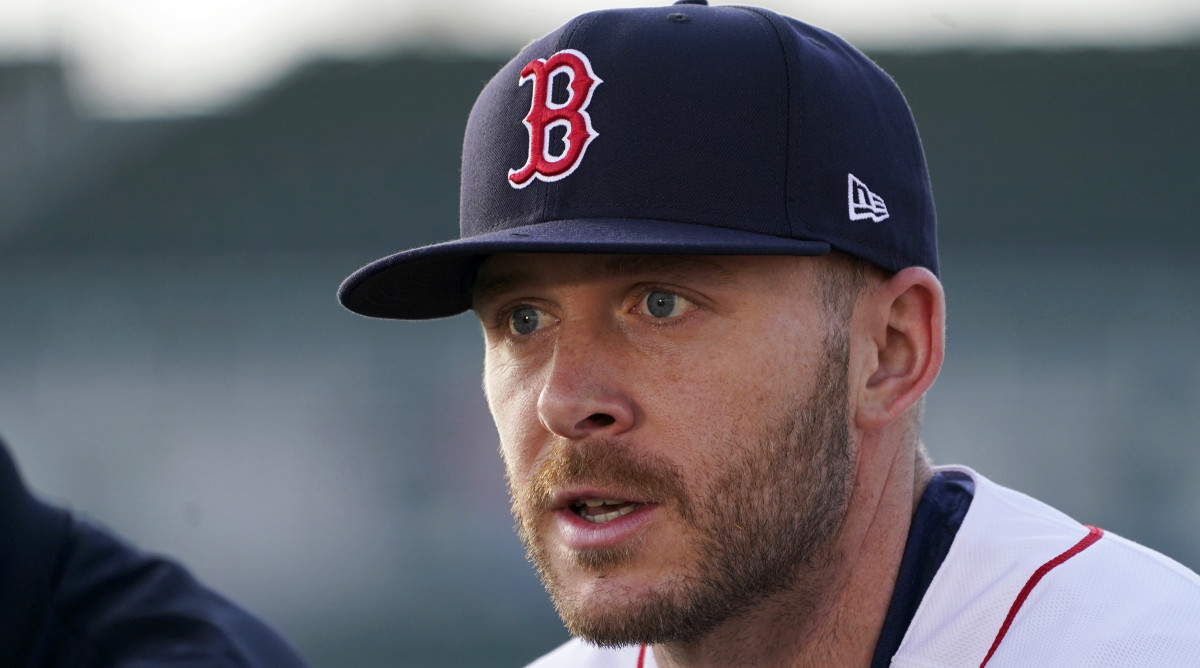Red Sox’ Hopes Depend on New Story, Same Meh Rotation

On April 1 of last year, the Red Sox were set to open up the 2021 season at home against the Orioles when Mother Nature had other plans. Rain pushed Opening Day back 24 hours, which must have felt like a sick April Fool’s Day joke after the team’s wayward 2020 campaign. What followed was an abysmal three-game sweep at the hands of an eventual 110-loss team by a combined score of 18–5. The prognosis for Boston felt grim before it completed one turn through the rotation.
As it turned out, all was not lost. The Red Sox won their next nine games to usher in one of the most surprisingly successful campaigns in the league. Boston hardly fits the profile of a scrappy underdog, but few expected the team to emerge from the loaded American League East and advance all the way to the ALCS before the season began—much less after that three-game sweep against the Orioles. After an eventful offseason that saw gobs of talent flood into the division, how well has the team positioned itself to make another postseason run?

For starters, let’s look at the … starters. Last year’s rotation was an overachieving bunch made up of several pitchers with spotty track records looking for second chances. Garrett Richards, Nick Pivetta and Martín Pérez had all battled injury or ineffectiveness (or both) in the years leading up to 2021, and combined to post a 4.70 ERA across 405 ⅔ innings. That might not sound like much, but it was far from awful. And not terrible was vital for a team with little else in the way of viable starting pitching options. Richards and Pérez are both gone, as is lefty Eduardo Rodríguez, leaving the team with scarce durable, proven arms.
In finding suitable replacements, the front office appears to have employed a similar approach to last year: short-term reclamation projects. Michael Wacha was hit hard last season with Tampa Bay, posting a 5.05 ERA over 124 ⅔ innings. Yet he rarely issues free passes—his 5.6% walk rate since 2020 is the 17th-lowest among pitchers with at least 150 innings—and he actually ranked in the 92nd percentile last season in chase rate.
Perhaps that’s reason enough to believe he can bounce back in 2022, but Wacha’s fellow newcomers will need to pull their weight, too. Rich Hill made his most starts (31) since ’07 and will be entering his age-42 season, while James Paxton is still recovering from Tommy John surgery and likely won’t pitch until July. Seven-time All-Star Chris Sale is out until late May with a stress fracture in his right rib cage. That leaves righthanders Nathan Eovaldi, Tanner Houck and Pivetta.
Eovaldi is tabbed to be the Opening Day starter for the third straight season and over the last few years has emerged as one of the AL’s best starting pitchers. In 2021, he went 11–9 with a 3.75 ERA, a mark that is somewhat inflated due to Boston’s shaky defense (his 2.79 FIP ranked first in the AL), and he finished fourth in the Cy Young race.
Sign up for the Five-Tool Newsletter to get all our MLB coverage in your inbox every week.
Entering his age-26 season, Houck is the lone young buck in Boston’s rotation. As a prospect he projected to be a solid late-inning reliever but the Red Sox have since developed him to be a starter. He’ll likely appear in both roles this season, as he was in 2021, but with the injuries to Sale and Paxton, he’ll open the year in the rotation. Houck impressed last year (3.52 ERA, 30.5% strikeout rate) in 18 games (13 starts), but he has never pitched more than 119 innings in a professional season. Boston shouldn’t expect him to carry a starter’s workload for an entire year.
Offensively, the addition of Trevor Story was perhaps as big a gain for the Red Sox as it was a loss for the Yankees, a team that very much could have used an upgrade at shortstop. Now, he’ll move over to the keystone to pair with shortstop Xander Bogaerts and form a fearsome-hitting middle infield, which likely will push Kiké Hernández to mostly outfield duties. A resurgent season from Jackie Bradley Jr. would certainly be a welcomed sight after the former Gold Glove winner faltered in his one year with the Brewers. JBJ has never been a consistent hitter, but he’s also never been anywhere near as bad (34 OPS+) as he was in Milwaukee. Kyle Schwarber and Hunter Renfroe are the two most notable departures from Boston’s lineup, but this team is still built to mash. In addition to Story, Bogaerts and Hernández, the order features Rafael Devers, J.D. Martinez and Alex Verdugo.

Forecasting the Red Sox’ 2022 hopes must be viewed in the context of the rest of the division. The Rays have established themselves as the class of baseball in terms of player development and organizational depth. They’ve led the AL in wins in back-to-back seasons and made the playoffs in three straight years, including their World Series appearance in ’20. The Blue Jays now look delightfully frightening after an eventful offseason that’s seen them acquire Kevin Gausman, Matt Chapman and Yusei Kikuchi. And the Yankees are, well, the Yankees, even if they’ve now become the Big Apple’s most frugal team.
Boston’s perceived shortcoming entering this season is the same as it was last year: starting pitching. Rather than make big swings to address a pressing need, the front office has once again operated on the fringes of the market to piece together something resembling a respectable rotation that can support what should be a formidable offense. As the old saying goes, if it ain’t broke, don’t fix it. In this case, if what’s broken still works O.K., then you might as well not change a thing.
More MLB Coverage:
• Cody Bellinger Is MLB’s Happiest Spring Training Strikeout King
• Giants Don’t Have to Chase Last Year’s Ghosts
• Five-Tool Newsletter: The Cubs Are Better Than You Think
• Correa’s Move to Minnesota Could Be a Perfect Match
• Rockies Repeat History With Stunning Kris Bryant Signing
